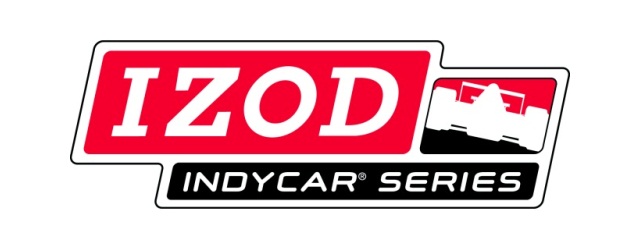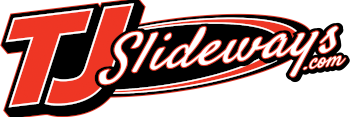
By Amy Konrath
Today’s IZOD IndyCar Series, Firestone Indy Lights and Mazda Road to Indy headlines:
1. Test of Speedway aero kit lays foundation for May
2. Rahal provide surprise for Education Program participants
1. Test of Speedway aero kit lays foundation for May: Aesthetically, Tony Kanaan described the new car with a reconfigured aerodynamic package for the Indianapolis Motor Speedway and Auto Club Speedway as “slick.”
Adding his on-track perspective, Kanaan said the Dallara chassis tested April 4 at Indianapolis Motor Speedway was superior to the chassis prototype he and Dario Franchitti drove on the 2.5-mile oval in autumn.
“It was more balanced than it was last year,” Kanaan said. “We worked on it, we talked about it. Some people criticized (the car) at the end of last year, but it’s a new car and we have to figure it out. Dallara did a great job, along with (INDYCAR vice president of technology) Will Phillips and the people at INDYCAR. It’s going in the right direction.
“I went out of the pits and went flat out right away, so I have to say that the aero kit is definitely a little bit better. We’re going to see some quality drivers giving positive feedback so when we come back here in May we can have the right stuff.”
Nine IZOD IndyCar Series drivers participated in the morning and afternoon sessions on an off week in the schedule. Kanaan’s No. 11 entry joined four other cars powered by Chevrolet – Ed Carpenter (owner/driver for Ed Carpenter Racing), Marco Andretti (Andretti Autosport), JR Hildebrand (Panther Racing) and Helio Castroneves (Team Penske).
Scott Dixon (Target Chip Ganassi Racing), Takuma Sato (Rahal Letterman Lanigan Racing), Mike Conway (A.J. Foyt Racing) and Justin Wilson (Dale Coyne Racing) ran with Honda’s 2.2-liter, turbocharged V-6 engine. A total of 495 laps were recorded on a breezy, mid-60s day.
Laying a foundation was the goal of teams. Characteristics of the car-engine package, along with tire wear, need to be discerned for initial setups for practice that begins May 12. Engineers then can dial in the car for qualifications and Race Day.
“It’s different, no question about it, because we’re so used to the other car,” series championship points leader and three-time Indianapolis 500 champion Helio Castroneves said. “Like anything else you have to develop it, and right now that’s what we’re doing. Every time we are at this place it’s extremely important because you find out what to do and what not to do.”
The only mandatory part of the Speedway aero kit that teams had to utilize was the new rear-wheel guards that are taller, lighter and have a slightly different shape than the sets being used on the road/street circuits and the oval races at Texas Motor Speedway, Iowa Speedway and the Milwaukee Mile.
Teams could experiment with a rear-wing mainplane angle of between 0 and -10 degrees, underwing strakes and sidewall extensions (to keep air from becoming turbulent under the car), wickers on the front- and rear-wing mainplanes.
The rear-wheel guard/wings work in combination with the other bodywork to create less drag and more downforce. Minimum car weight will be 1,535 pounds (excluding driver and driver equivalency weight).
“The configuration we have now is the one we intend to come back with in May,” Phillips said. “We need to look at what comes out of today and see if anything further needs to be changed. We’ll get some feedback from teams and drivers (regarding) what the car is like in traffic and what it’s like on their own.”
The Dallara-designed and -produced components were tested in winter in both scale model and full size in the wind tunnel at the Auto Research Center in North Carolina in conjunction with INDYCAR in response to lap speeds and handling deemed inadequate the testing by Kanaan and Franchitti.
“Springs, ride heights … just trying to get the aero to the right attitude of these corners,” said Justin Wilson of Dale Coyne Racing. “It’s just a steep learning curve the first time out on the track. Once you’re behind the wheel, it feels similar to the old car through the corners.”
2. Rahal provide surprise for Education Program participants: “How much do you make?” ” What kind of (personal) car do you drive?” “How tall are you?”
Graham Rahal discovered that kids do say the darndest things when he met fourth-graders during the first of the 500 Festival & Indianapolis 500 Education Program’s Study Trips to the Indianapolis Motor Speedway April 4.
“It’s great to be out here and spend some time with these kids because they are the future fans of the sport,” said Rahal, driver of the No. 38 Service Central Chip Ganassi Racing car (“the red, white and blue one” as he pointed out to students). “You get a wide variety of questions, but that’s to be expected with 10-year-olds.”
During the six-week Study Trips program presented by Indiana University Health, thousands of fourth-grade students will augment what they’ve learned about Indiana’s motorsports culture and the Speedway – part of their Indiana state history curriculum – with interactive experiences at the racetrack.
That was the case April 4 as students received the bonus of watching an IZOD IndyCar Series test of the new Speedway aerodynamic kit on the 2.5-mile oval from the frontstretch grandstands.
“It’s just nice to have a personal point of view and (Rahal) grew up here but still has that ‘awe’ of the Speedway so the kids just feed off that,” said 500 Festival volunteer Lara Bolton. “It’s a fantastic program.”
Other stations include the meaning of the different flags used during race events, history/traditions of the Speedway, a visit to the infield medical center and the IMS Hall of Fame Museum.
In correlation with IU Health’s presenting sponsorship of the program, a Health & Nutrition Station was added this year featuring a video of Andretti Autosport driver James Hinchcliffe teaching students what drivers do to stay fit and healthy.
Almost 22,000 students from 320 schools across the state enrolled this year in the umbrella Education Program, which was launched in 2004.
“Within the framework of Indiana Academic Standards, we hope to encourage the next generation of race fans to be part of this remarkable culture,” said Kirk Hendrix, president and CEO of the 500 Festival.
***
The 2012 IZOD IndyCar Series season continues with the Toyota Grand Prix of Long Beach on April 15 on the Streets of Long Beach, Calif. The race will be telecast live at 3:30 p.m. (ET) by NBC Sports Network. The IMS Radio Network will also carry the race live on XM Channel 94 and Sirius 212. The next Firestone Indy Lights race is the Grand Prix of Long Beach on April 15. It will be telecast by NBC Sports Network at 5 p.m. (ET) on April 19. NBC Sports Network’s coverage of the Grand Prix of Alabama will be telecast at 5 p.m. on April 5.
